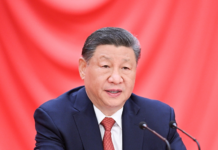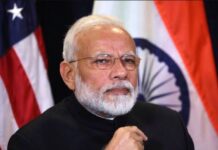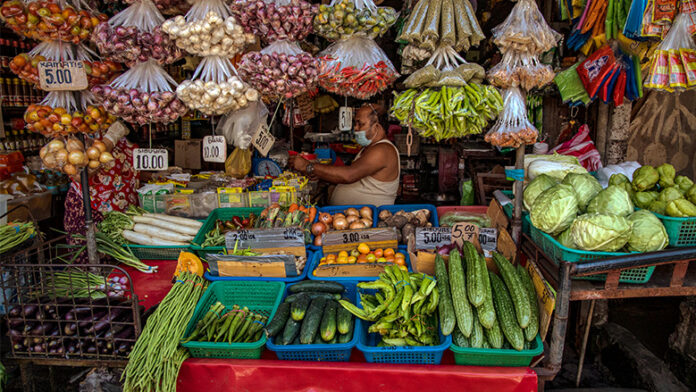During its peak, the pandemic caused recession, and recession-like economic situation, in most parts of the world. Vaccine inequality, lack of debt moratorium/relief, little allocation of SDRs and overall financing, and lack of climate finance all meant that the developing countries– even after more than two years into the Covid pandemic, along with global commodity supply shock, and the accentuating effect of war in Ukraine by Russia– are still struggling to get their economic growth, and macroeconomic stability on track on any sustained basis.
At the same time, developing countries were already facing a rising debt situation before the pandemic, which has only become more unsustainable in many developing countries, and with rising import costs, and interest rates globally at the back of mainly supply shock led high inflation – and in the case of developed countries overall, over-board stimulus injection causing demand-pull inflation, in addition to supply-side, cost-push inflation – foreign exchange reserves, and local currency have come under serious pressure at many places, including Pakistan, where recently the rupee crossed Rs 200 against the dollar. A recent Bloomberg published article ‘Pakistan Rupee drops past 200 a dollar as IMF bailout uncertain’ pointed out in this regard ‘Pakistan’s currency plunged past 200 a dollar for the first time ever as a shortage of dollars threatens to spiral into a fullblown crisis. … Policy makers are in talks with the International Monetary Fund to revive a stalled loan program. Key conditions would require Prime Minister Shehbaz Sharif to raise fuel prices, which risks stoking public anger with inflation already at 13%. … The rupee may drop as low as 210 a dollar if the uncertainty isn’t resolved, according to Samiullah Tariq, head of research at Pakistan Kuwait Investment Co. The nation’s benchmark KSE-100 index has declined for past five straight weeks.’
While an interest rate hike is important for curtailing high level of inflation in many developed countries, yet they appear to have taken a stricter monetary policy stance than warranted, given there is also a significant role of cost-push inflation at the back of global commodity supply, with impact all the more accentuated in the wake of the invasion of Ukraine by Russia. While this is likely to have stagflationary consequences for these developed countries as well, lack of a soft approach of interest rate hike, and the signal in terms of the extent it is likely to be increased, has led to significant leakage of otherwise much needed foreign portfolio investment (FPI) from developing countries overall, and including Pakistan, adding to their already difficult balance of payments situation.
Moreover, the risk of default is also rising in many developing countries. For instance, in Pakistan import cover– the number of months of imports that can be made with available foreign exchange reserves– has fallen well below the minimum desired level, as per international best practices, of 3 months, to only a little over 1.5 months of import cover! Having said that, Sri Lanka has already defaulted on its debt payments, but many developing countries face a similar difficult situation. A recent article ‘Sri Lanka is the first domino to fall in the face of a global debt crisis’ published by The Guardian, pointed out in this regard ‘The departure of Sri Lanka’s prime minister, Mahinda Rajapaksa, follows weeks of protest and a deepening crisis. There is no bankruptcy system for states but if there was then the south Asian country– down to its last $50m (£40m) of reserves– would be first in line to use it. A team from the International Monetary Fund (IMF) this week started work with officials in Colombo over a bailout that will include a tough package of reforms as well as financial support. But as the IMF and its sister organisation, the World Bank, know full well, this is about more than the mismanagement of an individual country. They fear Sri Lanka is the canary in the coalmine. Across the world, low- and middle-income countries are struggling with a three-pronged crisis: the pandemic, the rising cost of their debt, and the increase in food and fuel prices caused by Russia’s invasion of neighbouring Ukraine.’
UNCTAD reportedly indicated that the developing countries needed financing to the tune of $2-$3 billion up till December 2020, while it is already late May 2023 and the financing needs have most probably increased, since no significant financing or debt relief has been received by developing countries as such up till now. In the absence of the needed level of financing for providing required level of stimulus, and making essential public health- and overall development expenditure, lack of inclusive growth in particular, and with overboard increase in the interest rate and rising cost-push inflation further diminishing prospects for greater inclusion of small and medium enterprise in terms of share in economic growth, has overall resulted in likely increase of poverty and inequality.
The IMF, and other multilaterals need to understand that the economic situation of developing countries– which significantly feeds into political instability in general as well– requires practising counter-cyclical policies, and that the above steps, among others, should be taken at the earliest to enable developing countries provide needed level of stimulus, and practice much-needed counter-cyclical policies.
The rising level of economic stability in developing countries overall, has also led to greater political instability in many countries, for instance, Sri Lanka to much greater extent, and Pakistan to a relatively lesser level but still quite high. So when the world needed to unite against the existential challenge of climate change, and likely more pandemics in the future, lack of a global economic thinking – for instance, of no vaccine apartheid, and a greater level of debt relief and financing provided to developing countries– has left the world starkly divided between developed countries– overall facing a difficult economic situation in terms of years of perpetuation of neoliberal assault, and with consequences in the political domain as well, for instance in terms of rising level of politics of fear, and the greater role/influence of moneyed interest over public policy– and developing countries– overall suffering as well from starker consequences of neoliberal policies, given a weaker economic and political institutional base to start with, and lack of capacity to provide large stimulus injections, as against the developed countries.
Years of practice of neoliberalism in general globally, resulting in weak regulatory frameworks checking the ‘profit-over-people’ mindset of global supply chains, in addition to the negative impact of pandemic in causing supply shock, invasion of Ukraine by Russia, and climate change, have all added to the risk of serious food crisis globally. Already, decade-high food prices are badly hurting developing countries in particular, in terms of negatively impacting their import cover, and also in the shape of rising level of imported inflation component in overall inflation.
For instance, climate change has already reportedly somewhat affected wheat production in Pakistan, while the war has meant that wheat prices have also risen significantly, which on one hand may lead to making greater imports, and on the other buying at a higher rate. A recently published article ‘The coming food catastrophe’ by The Economist, pointed out in this regard ‘The war is battering a global food system weakened by covid-19, climate change and an energy shock. Ukraine’s exports of grain and oilseeds have mostly stopped and Russia’s are threatened. Together, the two countries supply 12% of traded calories. Wheat prices, up 53% since the start of the year, jumped a further 6% on May 16th, after India said it would suspend exports because of an alarming heatwave. …António Guterres, the UN secretary general, warned on May 18th that the coming months threaten “the spectre of a global food shortage” that could last for years. The high cost of staple foods has already raised the number of people who cannot be sure of getting enough to eat by 440m, to 1.6bn. Nearly 250m are on the brink of famine. … All this will have a grievous effect on the poor. Households in emerging economies spend 25% of their budgets on food – and in sub-Saharan Africa as much as 40%. In Egypt bread provides 30% of all calories.’
Some of the main steps that rich, advanced countries, and multilaterals need to take for instance, is to quickly initiate a meaningful debt moratorium/relief process for improving an otherwise difficult debt situation of developing countries overall, and include private sector at a very early stage of such discussions, since over the decade, the proportion of private sector debt has increased significantly in the overall debt portfolio of developing countries.
At the same time, the IMF should play a greater role in getting the enhanced SDRs allocation from last August, most of which went to developed countries, to be relocated from the rich, advanced countries to developing countries. Moreover, the rich, advanced countries should look to come good on providing a lot closer, if not completely, the full pledged amount of climate finance to the tune of $100 billion annually to developing countries. Also, the IMF, and other multilaterals need to understand that the economic situation of developing countries– which significantly feeds into political instability in general as well– requires practising counter-cyclical policies, and that the above steps, among others, should be taken at the earliest to enable developing countries provide needed level of stimulus, and practice much-needed counter-cyclical policies.























